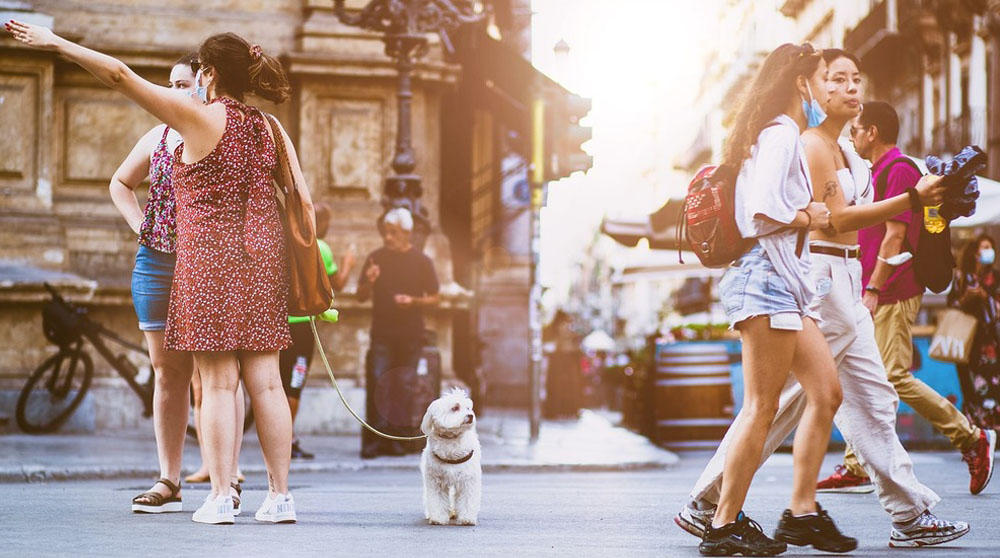
According to a report by the UN Office for the Coordination of Humanitarian Affairs and the International Federation of Red Cross and Red Crescent Societies, extremely high temperatures, which, regardless of human activity, would occur once every 50 years, have now become five times more likely. And a 2°C rise in Earth's temperature would increase that probability by a factor of 14. Such phenomena will be associated with levels of heat and humidity that are much more dangerous to humans. The authors of the report estimate that up to 600 million people will be affected by the problem by 2100.
Scientists from The Earth Institute of Columbia University in USA have developed a climate model which shows that about 83 million people could die from the consequences of global warming before the end of the century.
Why heat harms health?
Many people report feeling irritable on hot days. Evidence suggests that extreme heat has a negative effect on mental health. As the Guardian reported with reference to a study conducted in New York, on hot days the number of emergency visits to the hospital for affective and anxiety disorders, schizophrenia and dementia, as well as substance abuse, increases. Another study linked rising temperatures and increased suicide rates.
Hot weather can affect air quality, making it difficult to breathe. High temperatures are usually accompanied by still air. The air stagnates, leading to the accumulation of pollutants. Ground-level ozone is especially harmful. This gas is formed when pollutants emitted by cars, power plants and industrial sources react chemically with sunlight. You can learn more about the effects of heat on the human organism in our recent publication.
Artificial rains
Various countries are looking for their own solutions to prevent unbearable heat waves. For example, the United Arab Emirates was able to artificially cause rain in a heat wave of 50°C. The technology to create rain consists of special experiments to "seed" the clouds. The UAE conducted them jointly with scientists from the British University of Reading. Drones launched electrical discharges into the clouds without the use of chemical compounds.
Drinking fountains, green areas, air conditioning
Municipalities of different European cities, taking into account the current heat wave, are making efforts to create local green areas with drinking fountains, develop new formats of landscaping, create cold pavilions, air conditioning equipment of social facilities, public transport, etc.
Urban greening and inefficient fuel consumption
The heat threat in cities is exacerbated by heat-absorbing building materials, transportation, industry, higher levels of air pollution, lack of vegetation, and other factors. This phenomenon is known as the urban heat island effect and means that cities are typically 3-8°C warmer than rural areas.
Singapore has been looking for a solution to this problem since 2017. They have created a digital model to analyze the effectiveness of various measures to reduce heat and avoid spending on solutions that may not work.
The main problems of cities overheating are lack of green spaces and inefficient use of energy and fuel in urban infrastructure.
Increasing resilience to heat
The most obvious ways to combat the heat island effect in cities are to expand green coverings, including planting trees, placing "green roofs," etc. Other options include the introduction of "cool roofs" with coatings that reflect more sunlight and absorb less heat. Such roofs, for example, are being installed as part of the NYC Cool Roofs project in New York City. So-called "cool" roofs are already being installed in Los Angeles, Philadelphia, Washington DC, Toronto, Cape Town, Madrid and Buenos Aires.
Large amounts of green spaces, green roofs, and other natural elements serve as a kind of buffer for climate hazards. They also improve physical and mental health and make cities more attractive to live in. Authorities in Barcelona have a 20-year urban cooling plan called Trees for Life. And the U.S. city of Austin has a carbon credit scheme to fund a tree-planting program.
Cool sidewalks
Cool sidewalks are gaining popularity. Conventional paving materials, which typically cover about 40% of a city, reach peak summer temperatures of up to 65°C and heat the air above them. To prevent this from happening, cities can use lighter colors to create more reflective surfaces that reduce heat risk. In Japan, for example, the Tokyo metropolitan government provides subsidies for cooling coatings as part of road construction and maintenance in priority areas. Other cities using cooling coatings include Paris, Los Angeles and Sydney.
Sponge Cities
Zhuhai, a Chinese city of 2.4 million people, is part of a pilot project to create sponge cities. All hard surfaces in such cities, particularly roads and sidewalks, can absorb, purify, and store water. The use of porous bricks and porous concrete can reduce the temperature of the sidewalk surface by 12°C and 20°C respectively and the air temperature by 1°C.
Splash pads
Tel Aviv has found other solutions to lower the temperature by installing water features and other alternative methods of shading and cooling, including splash pads. Splash pads are playgrounds where water is splashed from vertical structures or ground sprays and then drained before it has time to build up.
Heat reduction strategies that reduce urban heat island effects should become part of broader urban climate planning and be incorporated into relevant industry legislation, especially for new and existing buildings, transportation, and urban planning.